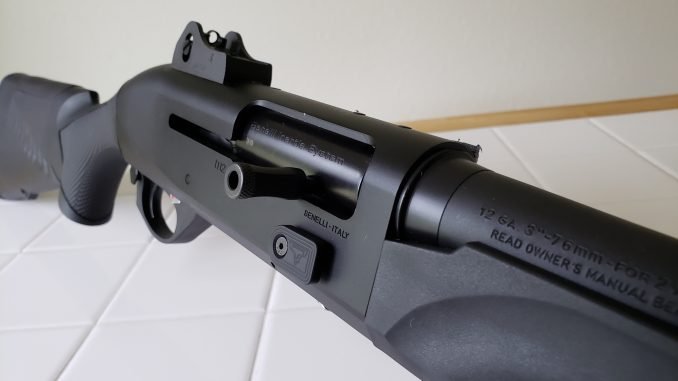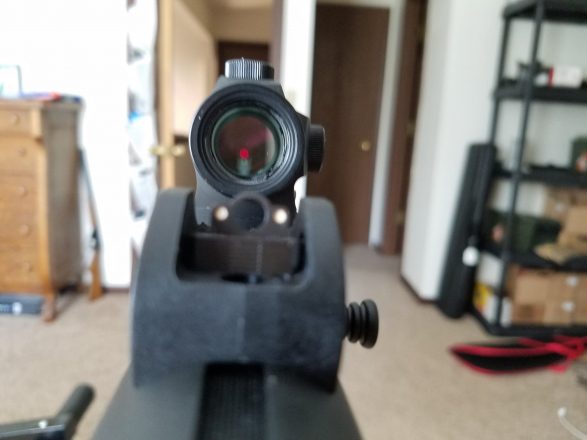
As with everything else on the shotgun, we have a wide selection when it comes to how we aim the gun. From simple brass beads, to modern electronic optics. Each have their strengths and respective special uses. For defensive purposes, there are clear cut advantages to certain variations.
Bead Sights
This is where it all started. A simple bead, typically brass, attached to the end of the barrel. Imprecise and inexpensive, this is what the vast majority of shotguns are equipped with. Does this mean we’re not capable of making precise shots? Absolutely not.
These are designed to be fast reference points when bird hunting and similar circumstances. We’re getting bare-bones sight pictures, but we can still be precise with practice. Shooters can upgrade their brass beads with XS Big Dot beads, as well as tritium night sights, and fiber optics. This is putting lipstick on a pig, but they certainly are an improvement.
I’ve personally used bead sights to get hits on man size steel targets at 75 yards, and headshots at 25 yards on paper. It can be done, but the shooter must be familiar with the performance of both their gun and ammunition.
Rifle Sights
Rifle sights, also known as notch-and-post, are a less common but highly effective sighting method. These allow for a much more precise sight picture, especially as distance increases. You’ll frequently see these on police shotguns, with the front and rear sight mounted on the barrel.
Ghost Ring Sights
Ghost ring sights use a large rear aperture with a front post, similar to that of an AR-15. These allow for rapid acquisition due to the large rear sight, while also providing enhanced precision for challenging shots. They can be easily adjusted to your preferred loading, and are frequently paired with white dots or night sights.
Ghost rings are my favorite style of shotgun iron sights, and what I have on my personal Benelli M2 Tactical.
Electro-Optics
As with rifles and pistols, the future of aiming shotguns lays with the red dot optic. These offer an incredibly rugged and precise aiming solution for all lighting conditions. Situational awareness is enhanced compared to irons due to the large viewing window. Aiming itself is simplified, allowing for “point and click” effectiveness, instead of the archaic methods of traditional sight alignment.

Optic selection is critical here, as budget options can leave both your wallet and heart aching. Shotgun recoil is intense, so our optics must be durable. Trijicon and Aimpoint have proven records, and are the primary candidates for mounting atop your gun.
Not all shotguns are capable of accepting optics in their stock configuration. Some guns come equipped with top mounted rails for mounting optics. Others are drilled for the use of rails, but lack them from the factory. Even if your gun isn’t compatible, you can always have it modified to accept an optic mount. This last option will likely be expensive and is not reversible; luckily more and more guns are coming optics-ready making this less of an issue.
More Shotgun Primers
Check out the other articles in our defensive shotgun primer series below!
Action Types for Defensive Shotguns
Ammunition Selection for Defensive Shotguns
Storage Conditions for Defensive Shotguns
Accessories for Defensive Shotguns
Defensive Shotgun Training and Resources
Support My Work
If you made it this far, thanks for reading! Writing isn’t my full-time profession, and nearly everything I do comes out of my own pocket. Between ammunition, tuition, range fees and more, expenses add up fast. If you like what I have to offer, consider making a donation to my Patreon.
Every bit helps bring more work like this to you, and contributes to shortened timelines or more in-depth work on my part. You’ll also have more direct access to me, offering suggestions for future projects, looking behind the scenes, and getting early access to some content. You can find my Patreon >>HERE<<





Be the first to comment